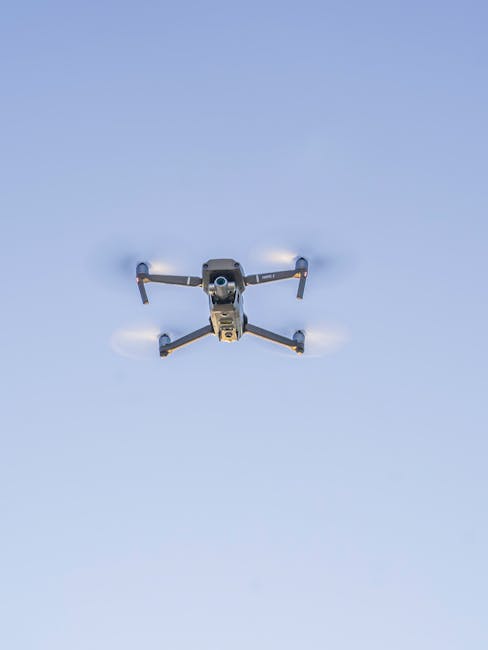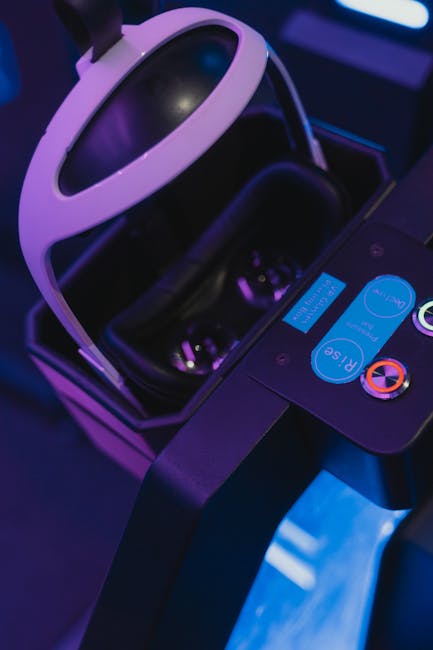Unlock encrypted content
Please enter your SSCE key to initiate on-the-fly decryption.
Decryption key: (Click cancel if you don't have the key)
Copied link to clipboard.
This feature is unavailable for free accounts. Upgrade now and enjoy all Premium benefits.
Go Premium!
This feature is unavailable for free accounts. Upgrade now and enjoy all Premium benefits.
Go Premium!
Please open this page in browser ( Google Chrome or Safari ) to use this feature.
Open In Browser
Intuitive File Collaboration Interfaces: Enhancing Productivity and Efficiency
Random related video for this blog.
Copied share link to clipboard.
With the rise of remote work and the need for real-time collaboration, intuitive file collaboration interfaces have become essential tools. These interfaces provide users with a user-friendly and intuitive platform to share, edit, and collaborate on files, regardless of their location. By streamlining the file collaboration process, these interfaces enhance productivity and efficiency, enabling teams to work together seamlessly.
Streamlining Collaboration with Intuitive Interfaces
Intuitive file collaboration interfaces revolutionize the way teams work together. They offer a range of features that simplify the file sharing and editing process, making collaboration effortless. With just a few clicks, users can share files with colleagues, assign tasks, and track progress. These interfaces often include features such as version control, real-time editing, and commenting, allowing team members to collaborate seamlessly on the same document. For example, imagine a marketing team working on a campaign. Instead of sending multiple versions of a document back and forth via email, team members can collaborate on the same file in real-time using an intuitive file collaboration interface. They can make edits, leave comments, and track changes, all within the same platform. This eliminates the confusion of multiple versions and ensures that everyone is working on the most up-to-date document.Compliance-Ready Storage Solutions: Ensuring Data Security and Privacy
With the increasing importance of data security and privacy, compliance-ready storage solutions have become a necessity for businesses. These solutions provide organizations with the tools and infrastructure to store and manage their files securely, while also ensuring compliance with industry regulations and standards. Compliance-ready storage solutions often include features such as encryption, access controls, and audit logs. These measures help protect sensitive data from unauthorized access and ensure that organizations meet regulatory requirements. For industries such as healthcare, finance, and legal, where data privacy is of utmost importance, compliance-ready storage solutionsare essential. For instance, a healthcare organization dealing with patient records must comply with HIPAA regulations to protect patient confidentiality. By using a compliance-ready storage solution, the organization can securely store and manage patient files, ensuring that only authorized personnel have access to sensitive information. This not only protects patient privacy but also helps the organization avoid hefty fines and penalties for non-compliance.
Advanced Driver Assistance Systems (ADAS): Paving the Way for Safer Roads
Advanced Driver Assistance Systems (ADAS) have gained significant traction in recent years, revolutionizing the automotive industry. These systems leverage advanced technologies such as sensors, cameras, and artificial intelligence to enhance driver safety and improve the overall driving experience. ADAS features include lane departure warning, adaptive cruise control, blind-spot detection, and automatic emergency braking, among others. These technologies help drivers avoid accidents, reduce the risk of collisions, and provide an extra layer of safety on the road. By leveraging real-time data and intelligent algorithms, ADAS systems can detect potential hazards and alert drivers, mitigating the risk of accidents. For example, imagine a driver unintentionally drifting out of their lane. An ADAS system equipped with lane departure warning technology would detect the deviation and alert the driver through visual or auditory cues, prompting them to correct their course. This preventive measure can potentially save lives and prevent accidents caused by driver inattention or fatigue.Alien Civilizations: Exploring the Possibilities
The existence of alien civilizations has been a topic of fascination and speculation for centuries. While concrete evidence of extraterrestrial life is yet to be discovered, scientists and researchers continue to explore the possibilities through various methods, such as the Search for Extraterrestrial Intelligence (SETI). SETI involves scanning the universe for any signs of intelligent life, such as radio signals or other forms of communication. With advancements in technology and the development of more powerful telescopes, scientists are able to analyze vast amounts of data in their quest to detect potential signals from alien civilizations. While the search for alien civilizations remains ongoing, the discovery of even the slightest indication of extraterrestrial life would have profound implications for our understanding of the universe and our place in it. It would open up new avenues for scientific exploration and spark a reevaluation of our perspectives on life and the possibilities that lie beyond our planet.Autonomous Vehicles: Shaping the Future of Transportation
Autonomous vehicles, also known as self-driving cars, have emerged as one of the most exciting technological advancements in recent years. These vehicles leverage a combination of sensors, cameras, and artificial intelligence to navigate and operate without human intervention. While fully autonomous vehicles are still in the development stage, significant progress has been made, and they hold immense potential for transforming the transportation industry. Autonomous vehicles offer numerous benefits, including improved road safety, increased efficiency, and reduced traffic congestion. By eliminating human error and leveraging real-time data, these vehicles can make split-second decisions, react to changing road conditions, and potentially reduce the number of accidents caused by human factors. Moreover, autonomous vehicles have the potential to revolutionize the way we commute and travel. Imagine a future where cars can communicate with each other, optimizing traffic flow and reducing travel time. With the rise of ride-sharing services and the integration of autonomous vehicles, the concept of car ownership may undergo a significant shift, leading to a more sustainable and efficient transportation system.Robot Rebellion: Separating Fact from Fiction
The idea of a robot rebellion, popularized by science fiction movies and novels, has long captured the human imagination. However, it is essential to separate fact from fiction when it comes to the potential risks associated with advanced robotics and artificial intelligence. While it is true that advancements in robotics and AI have the potential to disrupt industries and change the nature of work, the notion of a robot rebellion is largely a work of fiction. The development of ethical guidelines and safety protocols ensures that robots and AI systems are designed to serve human interests and adhere to ethical standards. Robots and AI systems are tools created by humans, and their behavior is determined by the algorithms and programming they are built upon. As long as these systems are designed with proper safeguards and oversight, the risk of a robot rebellion remains highly unlikely.Thumbnail Preview for Videos and Photos: Enhancing User Experience
In today's visually driven digital landscape, thumbnail previews play a crucial role in enhancing user experience. Whether it's browsing through a video streaming platform or scrolling through a photo gallery, thumbnail previews provide users with a glimpse of the content, helping them make informed decisions about what to watch or view. Thumbnail previews serve several purposes. They give users a visual representation of the content, allowing them to gauge its relevance and quality. Additionally, they provide a quick overview of the content, helping users find what they are looking for without having to click and open each file individually. For instance, on a video sharing site, thumbnail previews allow users to see a snapshot of the video, including key scenes or highlights. This helps users decide whether the video aligns with their interests or if it's worth watching. Similarly, in a photo gallery, thumbnail previews give users a glimpse of the images, making it easier for them to navigate and select the ones they want to view.Internet of Things (IoT): Connecting the World Around Us
The Internet of Things (IoT) has emerged as a transformative technology, connecting devices, sensors, and everyday objects to the internet. By enabling communication and data exchange between these devices, IoT has the potential to revolutionize various industries and enhance our daily lives. IoT devices can collect and transmit real-time data, allowing for remote monitoring, predictive maintenance, and automation. From smart homes and wearable devices to industrial applications and smart cities, the possibilities of IoT are vast. For example, in a smart home, IoT devices such as smart thermostats, security systems, and lighting controls can be interconnected, allowing homeowners to control and monitor their homes remotely. This not only enhances convenience but also offers energy-saving benefits and improved security.Cloud Storage Benefits: Security, Accessibility, and Scalability
Cloud storage has become an integral part of our digital lives, offering numerous benefits over traditional local storage solutions. From individuals to large enterprises, cloud storage provides a secure and convenient way to store, access, and share files. One of the primary advantages of cloud storage is its security features. Cloud storage providers, such as FileLu, offer encryption and access controls to protect files from unauthorized access. Additionally, cloud storage solutions often have redundant backups, ensuring data integrity and protection against hardware failures or disasters. Another significant benefit of cloud storage is its accessibility. With cloud storage, files can be accessed from anywhere with an internet connection, making collaboration and remote work seamless. Whether working from home, on a business trip, or in a different time zone, users can access their files and collaborate with team members effortlessly. Furthermore, cloud storage solutions offer scalability, allowing users to expand their storage capacity as needed. Whether it's personal files, business documents, or multimedia content, cloud storage can accommodate large volumes of data without the need for physical storage devices. In conclusion, intuitive file collaboration interfaces, compliance-ready storage solutions, advanced driver assistance systems, the possibility of alien civilizations, autonomous vehicles, the myth of robot rebellion, thumbnail previews for videos and photos, the Internet of Things, and the benefits of cloud storage are all topics at the forefront of technological advancements. These concepts and technologies have the potential to shape our future, revolutionize industries, and enhance our daily lives. By leveraging the power of innovation and embracing these advancements, we can pave the way for a more connected, efficient, and secure world.Frequently Asked Questions (FAQs)
Question: What is FileLu's pricing structure? Answer:
FileLu offers Premium plans ranging from 256 GB to 500 TB at prices as low as $2.50 per month. They also provide free plans from 10 GB to 250 GB.
Question: Can FileLu handle large file transfers? Answer:
Yes, FileLu offers large file transfer capabilities, allowing users to send files up to 250 GB in size.
Question: How does cloud storage benefit businesses? Answer:
Cloud storage provides businesses with secure and accessible storage solutions, enabling seamless collaboration, scalability, and data protection.
Case Studies
Case Study 1: Company X Company X, a global marketing agency, implemented an intuitive file collaboration interface to streamline their creative processes. By using real-time editing and commenting features, the team reduced the time spent on back-and-forth communication and improved overall productivity. The interface also allowed them to track project progress and ensure everyone was working on the latest version of files. As a result, Company X saw a significant increase in efficiency and client satisfaction.
Case Study 2: Hospital Y Hospital Y, a leading healthcare institution, implemented a compliance-ready storage solution to protect patient data and ensure HIPAA compliance. The solution provided encryption, access controls, and audit logs, allowing the hospital to securely store and manage patient records. By adhering to regulatory requirements, Hospital Y enhanced patient privacy, reduced the risk of data breaches, and avoided potential fines and penalties.
Case Study 3: Transportation Company Z Transportation Company Z integrated advanced driver assistance systems (ADAS) into their fleet of vehicles to enhance driver safety and reduce accidents. The ADAS features, such as automatic emergency braking and blind-spot detection, helped drivers avoid potential hazards and improved overall road safety. As a result, Transportation Company Z experienced a significant decrease in accidents and associated costs, while also ensuring the well-being of their drivers.
By Amelia Isabella
Email: [email protected]
Related
NAS Limitations: Exploring the Potential of Internet Security and Efficient...
July 12, 2023
Read More
Real-time System Monitoring: Emerging Technologies for Hybrid Cloud Storage, Data...
July 12, 2023
Read More
Brain-Computer Interface and FileLu.com: Revolutionizing Storage Capacity and Integration
July 12, 2023
Read More
Cryonics Compliance-Ready Storage Solutions: Safeguarding the Future of Data
July 12, 2023
Read More
Introducing FileLu.com: Reliable Data Storage and File Management for the...
July 13, 2023
Read More
Digital Transformation: Empowering the Future of File Accessibility and Storage
July 13, 2023
Read More
Popular
Exploring the Benefits of Cloud Storage and Innovative Technologies in...
November 26, 2025
Read More
The Future of Digital Transformation: Exploring Smart Homes, Efficient File...
November 30, 2025
Read More
Latest
The Future of Digital Transformation: Exploring Smart Homes, Efficient File...
November 30, 2025
Read More
Exploring the Benefits of Cloud Storage and Innovative Technologies in...
November 26, 2025
Read More
The Future of Technology: Exploring Biohacking, Space Tourism, and Digital...
November 23, 2025
Read More
The Future of File Sharing: Streamlined Workflows for Photographers and...
November 19, 2025
Read More
Exploring the Intersection of Technology: From Cybersecurity to Augmented Reality...
November 16, 2025
Read More
The Future of File Management: Embracing Edge Computing and Efficient...
November 12, 2025
Read More
The Future of File Sharing: Exploring User-Friendly Solutions and Data...
November 5, 2025
Read More
The Future of Cloud Storage: How FileLu Empowers Creative Professionals...
November 2, 2025
Read More
The Future of Autonomous Technologies: Innovations in Robotics, File Sharing,...
October 29, 2025
Read More
Emerging Technologies Revolutionizing File Management: From Li-Fi to Robust Collaboration...
October 26, 2025
Read More
Emerging Technologies: Exploring the Impact of File Access Auditing, Genetic...
October 19, 2025
Read More
The Future of Data Storage: Exploring Advanced Encryption, Mobile Integration,...
October 5, 2025
Read More
Exploring the Future of Data Management: Security, Efficiency, and Cognitive...
September 28, 2025
Read More
Revolutionizing Data Management: Innovations in Storage, Security, and Sustainable Technology.
September 24, 2025
Read More




















